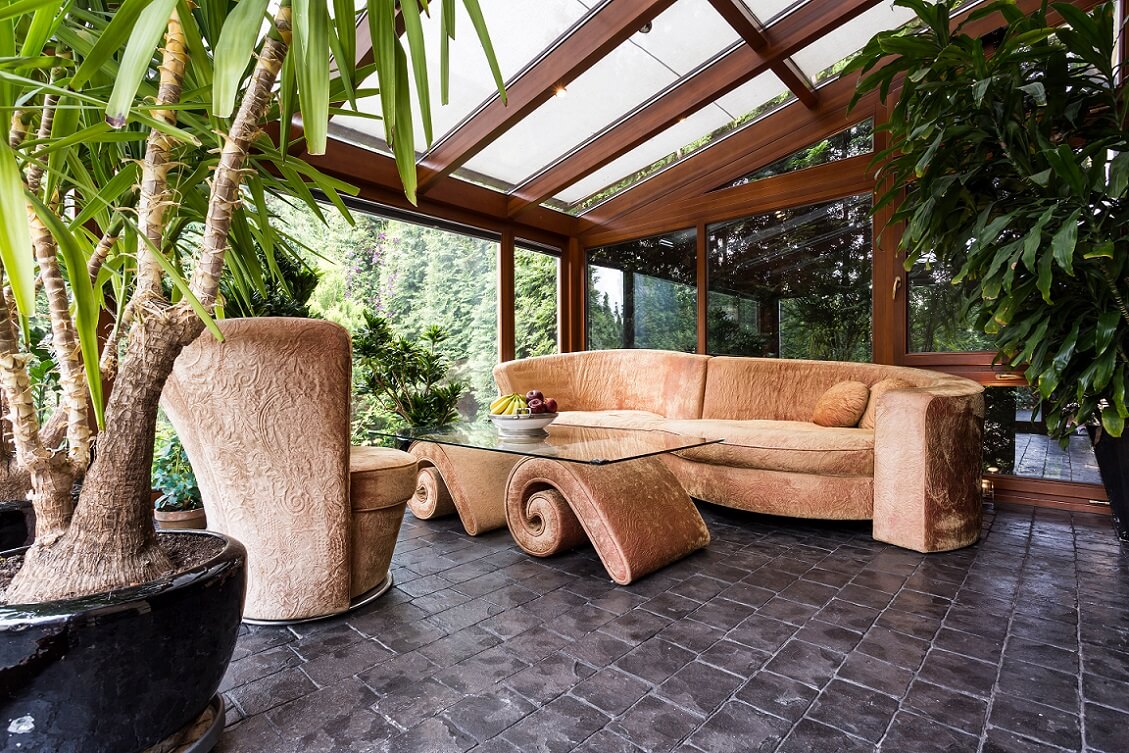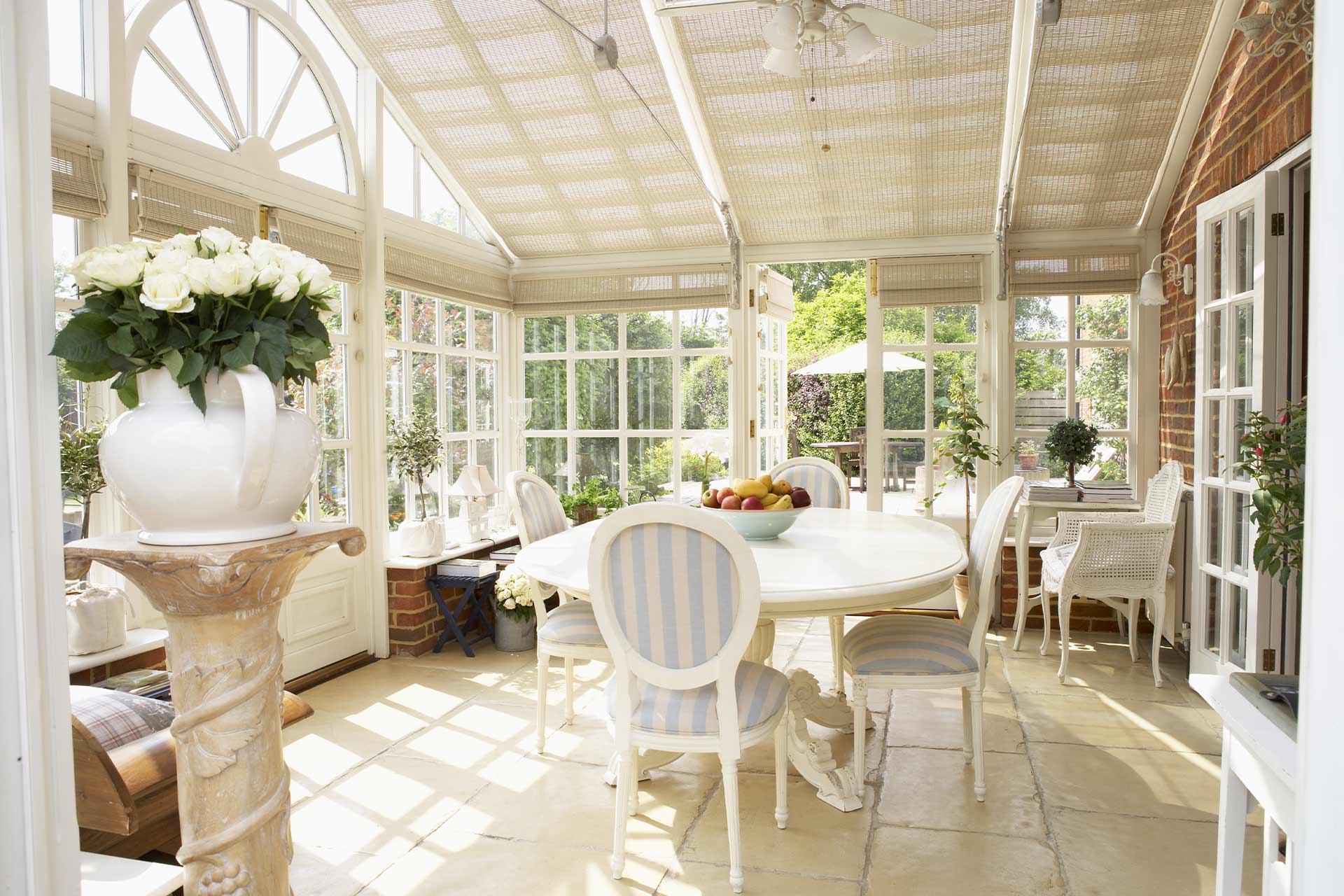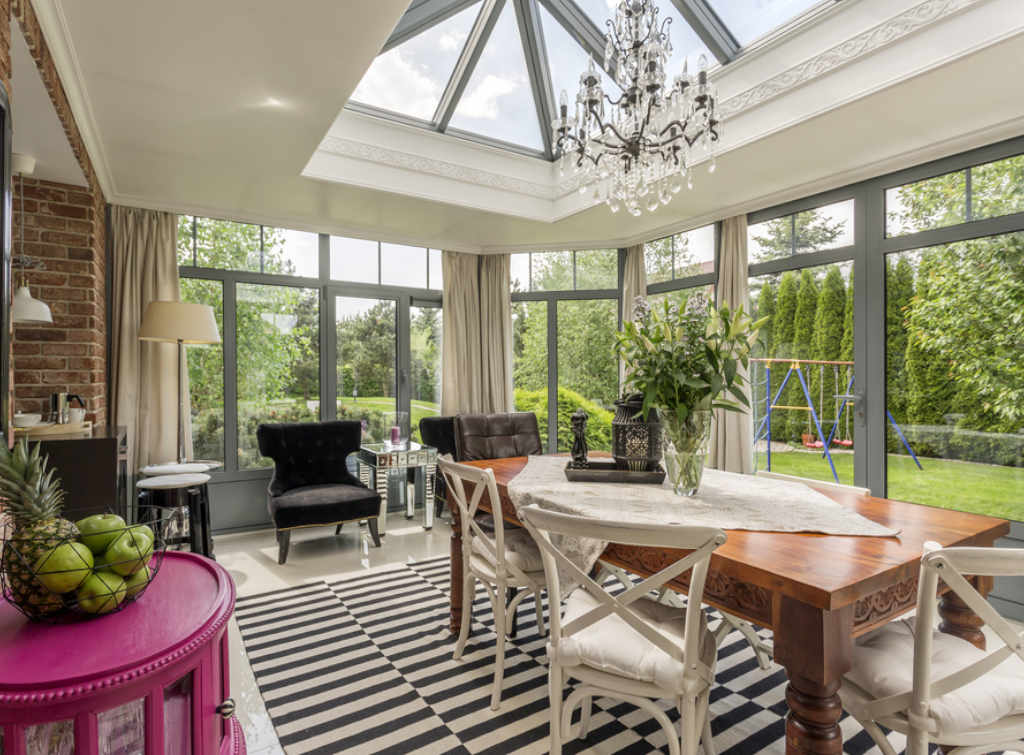Blog>Expert Advice>Orangery vs conservatory: which is better?
Last updated: 18 October 2024
Orangery vs conservatory: which is better?
The terms orangery and conservatory are often used interchangeably but there is a difference. So, which is better: an orangery vs conservatory? Let’s take a look.
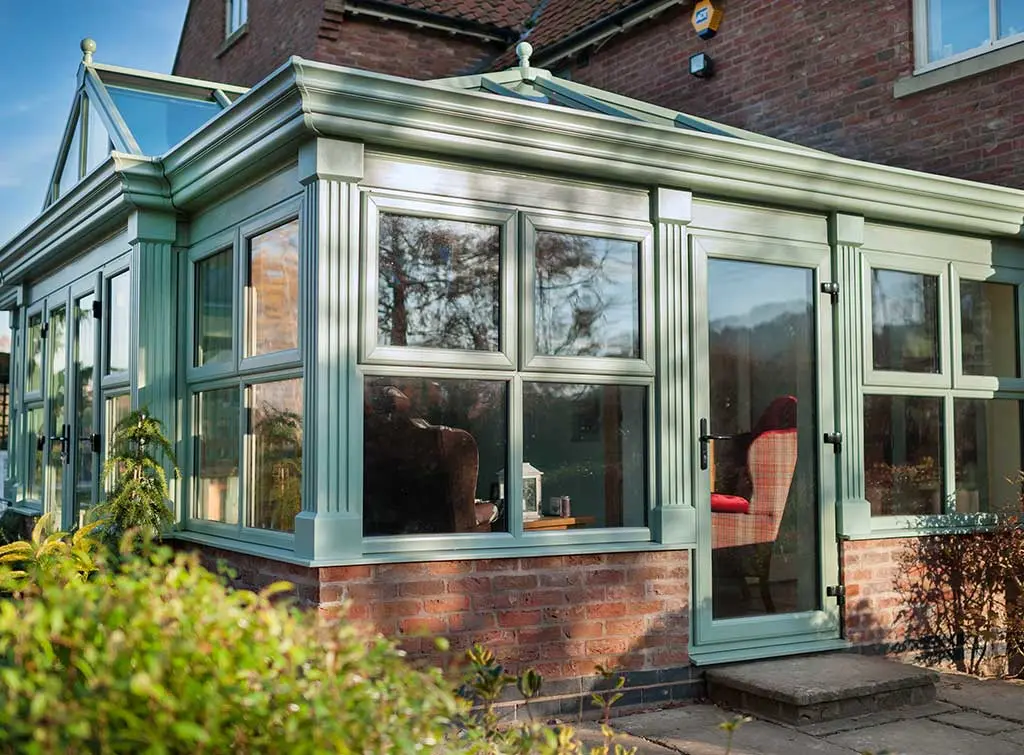
Keen to increase the usable space in your home with a structure that incorporates lots of glazing? Then an orangery and conservatory should both be strong contenders.
Here, we’ll break down the differences between an orangery vs conservatory and explore which is a better fit for your needs.
What's the difference between a conservatory and an orangery?
The main difference between a conservatory and an orangery is the amount of glass used.
Traditionally, conservatories are fully glass structures (with a low brick base).
On the other hand, the structure of an orangery is usually made from brick or stone, with large, tall windows to let lots of light in.
Nowadays, the line between conservatories and orangeries is becoming blurred as fully-glazed extensions have entered the scene.
However, there are still some key characteristics that can help you tell the two apart.
1. Walls
A conservatory has glazed walls that are at least 50% glass.
In contrast, an orangery has large, tall windows that take up less than 50% of the wall space. Traditionally, these are only on the south-facing wall.
2. Roof
Conservatories usually have pitched glazed roofs, which are at least 75% glass.
Orangeries, on the other hand, tend to have flat roofs with a single glass lantern in the centre – making the roof less than 75% glass.
3. Separation
Conservatories are built against the wall of the original house, with a door separating the two spaces.
Meanwhile, orangeries can likewise be built against the wall of the house, or they can be standalone structures.
So, what is the difference between an orangery and a conservatory, really?
As you can see, there’s not much to differentiate between the two.
And you’ll often find exceptions to the rules – for instance, a common conservatory refurbishment project is to replace the glass conservatory roof with a solid one.
With that in mind, perhaps the best way to think of the difference is that an orangery stands somewhere between a conservatory and a fully-fledged single-storey extension.
Its brick walls mean it’s generally more energy-efficient than a conservatory, while its large quantities of glass mean it’ll still let in plenty of light and give you the feeling of bringing the outside in.
An orangery could be a cost-effective addition to your home that might give you the best of both worlds.
See the tradespeople we've checked and recommend for your job
Orangery vs conservatory pros and cons
Now that you have some understanding of the differences between the two, let’s take a look at their pros and cons.
Orangery pros
Better suited to period homes
More consistent temperature
Can add more value to your home (as they’re closer to an extension)
Better suited to year-round use
Often fall under permitted development
Orangery cons
More expensive
Must adhere to building regs
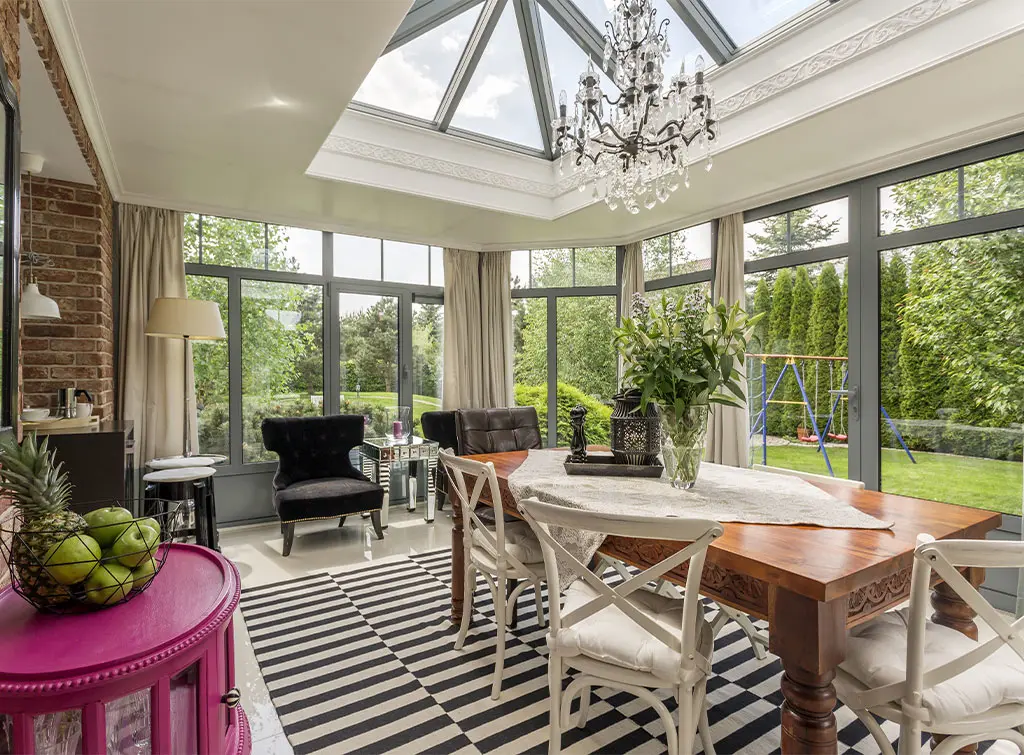
Conservatory pros
More contemporary in style
Can let in more natural light
Easier (and quicker) to install
Cost less
Usually exempt from building regulations and planning permission
Conservatory cons
Can be hot in the summer and cold in the winter
Requires more maintenance
Overlooking can be an issue
Cheaper models can detract from a home’s kerb appeal
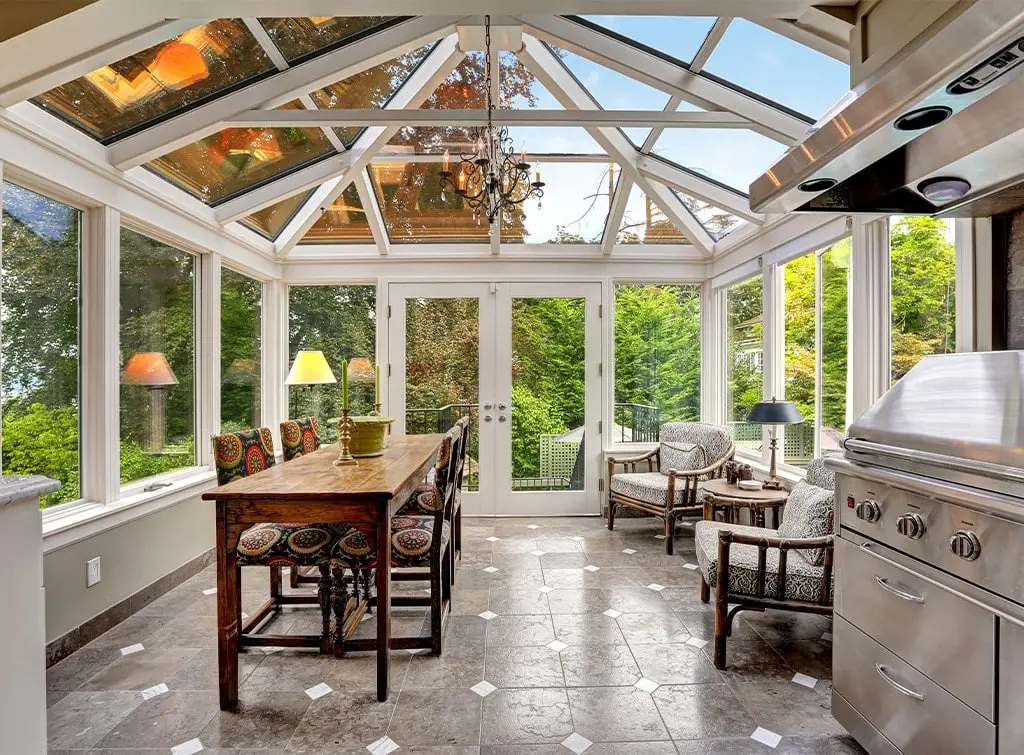
Is an orangery cheaper than an extension?
Yes! An orangery will typically be more expensive than a conservatory but cheaper than an extension.
This makes them a great middle ground if you’re looking to add space to your home that can be used year-round – especially as an orangery can often add as much value to your home as a traditional extension.
Orangery vs extension cost
To help you decide between an orangery vs extension, here are some rough price comparisons.
| Structure | Cost - lower range | Cost - higher range |
|---|---|---|
| Small single-storey extension | £40,000 | £56,000 |
| Average orangery | £30,000 | £35,000 |
| Average conservatory | £9,000 | £18,000 |
| Last updated: October 2024 Our costs are ballpark averages - get a local tradesperson to quote now | ||
Just bear in mind that these are only rough figures that don’t compare like-for-like measurements.
Head over to our orangery, conservatory, and house extension cost guides for more detailed cost estimates – or get a quote from a trusted tradesperson who takes your bespoke needs into account.
See the tradespeople we've checked and recommend for your job
Does an orangery require planning permission?
That depends. Both orangeries and conservatories will generally fall under your permitted development rights.
This means you won’t usually need planning permission to add them to your home – as long as you meet certain criteria. For instance…
The structure shouldn’t cover more than half of the land around your house
It should be built on the back of your property
The eaves height should be less than 3 metres
It shouldn’t exceed the height of the highest part of your home’s roof
It mustn’t extend over 6 metres to the rear of your semi-detached home (or 8 metres from your detached home)
Just bear in mind that this won’t apply to every property. For instance, if you live in a listed property, or in a conservation area, you’ll need to seek planning permission.
Head over to our guides on planning permission for orangeries and conservatories to learn more.
Is an orangery exempt from building regulations?
No! An orangery is considered a part of your home, which means it needs to meet building regulations.
On the other hand, conservatories can sometimes be seen as a separate structure.
This means that you may not need building regs sign-off for a conservatory – as long as it meets the following requirements:
The floor area is no more than 30 square metres
At least 50% of the wall and 75% of the roof is built with glazing or a translucent material
The conservatory is separated from the house by an external door or windows
All fixed electrical installations comply with building regulations
The glazing used complies with building regulations
The conservatory includes an independent heating system with its own temperature and power controls
If not, your conservatory will need building regs sign-off, just the same as an orangery.

On Checkatrade, you'll only find trades who meet our high standards and pass up to 12 checks.
The verdict: Is an orangery better than a conservatory?
The question remains: which is better in the great orangery vs conservatory debate?
Well, it’s impossible to give one simple answer as it’ll all depend on your goals and needs.
Orangeries...
If adding a permanent space that you can use year-round is your priority, an orangery is likely to be the better choice.
It will typically offer more consistent temperatures, and it’s likely to add more value to your home. However, you’ll need the budget for it!
Conservatories...
On the other hand, if you fancy adding an extra light-filled space to your home quickly, a conservatory might be your preferred option.
Not only will it be cheaper, but it’ll also be easier to install – especially as you may not even need to meet building regulations!
Ultimately, both are valid options for different homeowners – it’ll all depend on what function you want your new space to provide, what timeline you’re working towards, and how far your budget will stretch!
Whatever you decide, our trusted tradespeople are here to make your vision a reality. Simply enter your postcode into the search box below to find the perfect trade for the job.
See the tradespeople we've checked and recommend for your job
Orangery vs conservatory FAQs
Which is better: a conservatory or orangery?
That depends on your needs. An orangery will often be the better option if you’re looking for a permanent space you can use year-round. However, you might prefer a conservatory if you need a sun-filled room added to your home fast!
Is an orangery exempt from building regulations?
No. Unlike a conservatory (that can be seen as a separate structure), orangeries are considered a part of your home – which means they need to meet building regulations.
Is it cheaper to build an orangery or extension?
It’s cheaper to build an orangery than an extension. While a small extension typically costs around £40,000-£56,000, the average orangery costs between £30,000-£35,000.
Can you put a kitchen in an orangery?
Yes, many homeowners choose to put a kitchen in an orangery. In fact, it’s the perfect choice if you’re keen to create a light-filled kitchen extension.
See the tradespeople we've checked and recommend for your job
More Expert Advice Articles
See the tradespeople we've checked and recommend for your job



